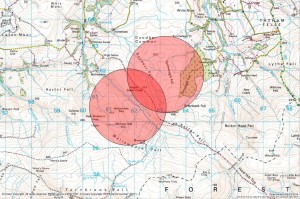 Natural England has just published some of its data (that I believe we paid for – as taxpayers) on satellite-tagged Hen Harriers. This is to be welcomed as what can possibly be gained by keeping secret data that in some cases are seven years old?
Natural England has just published some of its data (that I believe we paid for – as taxpayers) on satellite-tagged Hen Harriers. This is to be welcomed as what can possibly be gained by keeping secret data that in some cases are seven years old?
It’s not exactly data of the quality of those published by the RSPB a little while ago – but it’s a good start.
In 2014, nine Hen Harrier chicks were tagged in England and only three are still known to be alive. Two have died from what are thought to be natural causes and the remaining four have disappeared. Two of these, Sky and Hope, we have known a little about for a while because the RSPB told us about them. The other two missing birds (one from Langholm and the other from ‘somewhere in northern England’) disappeared on 1 September and 21 September – both in the Yorkshire Dales.

There are plenty of wise caveats about what the disappearance of these birds from the airwaves might mean – these are well worth reading.
Also, and these will repay careful examination, NE has published some information about the length of time that the satellite tags continued to transmit and the status of the birds. They don’t seem to last long do they?
I’ll be having a careful look at these data over the next few days and pondering over them.
[registration_form]
100 miles grid references will give anybody a headache trying to find forensic or for that matter any other “evidence” of thier whereabouts. Are the tags not any more precise than 100 mile references in this day and age?
Jack – of course they are! But you might write up a PhD very quickly if you see the accurate locations.
Why at this very moment in time have Natural England decided to come clean, was it pressure from concerned members of the public, I doubt it. What ever the true reasons are the information is very welcome, be it so late in the day.
My other concern mirrors what Jack had to say, why provide a two figure grid ref? That’s a huge 100 square kilometres of an area, when as we know the satellite tags can pin point locations to within a few metres. Perhaps the reason had more to do with concealing where and on which estate the harriers disappeared.
Even the RSPB supplied precise positions within their first Bowland map of the two locations where Hope and Sky disappeared this year. They then provided new maps which encompassed a much wider diameter. However it did not really matter because the later maps still identified the same single estates where both harriers went missing.
What is significant regarding these two estates, protected raptors have been subjected to intense persecution throughout the last two decades [Note added by Mark: obviously by person or persons unknown]. On the estate where Skye went missing images and data have recently been handed to the police depicting two occupied peregrine nests where clutches of eggs were removed from a nest in both 2013 and again this season. The position of the nests are so remote and difficult to access its unreasonable to suggest egg collectors were responsible for these losses. Not only peregrines have disappeared, but also one pair of goshawk went missing on this estate three years ago, none have been seen since.
Yorkshire’s not a very healthy place for Hen Harriers by the look of it. And whilst on the subject has anyone ever looked at expected/actual Buzzard densities in the Dales?
They need to improve the 10 hour transmitting / 48 hour re-charge cycle on these things (see NE website). Then there wouldn’t be a big uncertainty about where the birds are a lot of the time. A 1hr / 5hr cycle, or even half that, must be possible, even if daylight is an issue. Must only take seconds to transmit a position. Then much less opportunity for them to disappear and no-one have any idea where they are.
The signal needs to be received by a satellite too. Not all signals transmitted by the tags are received by the satellite. So unfortunately more frequent tansmissions will not neccesary result in more frequent location data. Transmission frequency is usually programmed to be optimum for battery size. Unfortunately ‘live’ tracking is not feasible yet.
So, from a quick scout over the data
Of Those birds that have gone ‘missing’ and we have found the data on, two were emaciated, two worm burden, two sighted alive, one unknown as they only found the chip, and one, Bowland Betty, classed as persecuted (questions still open)
so, seven to one.
I also note that in nearly a third of the ‘missing and unknown’ the last recorded location seems to be well clear of any grouse shooting.
Interesting….